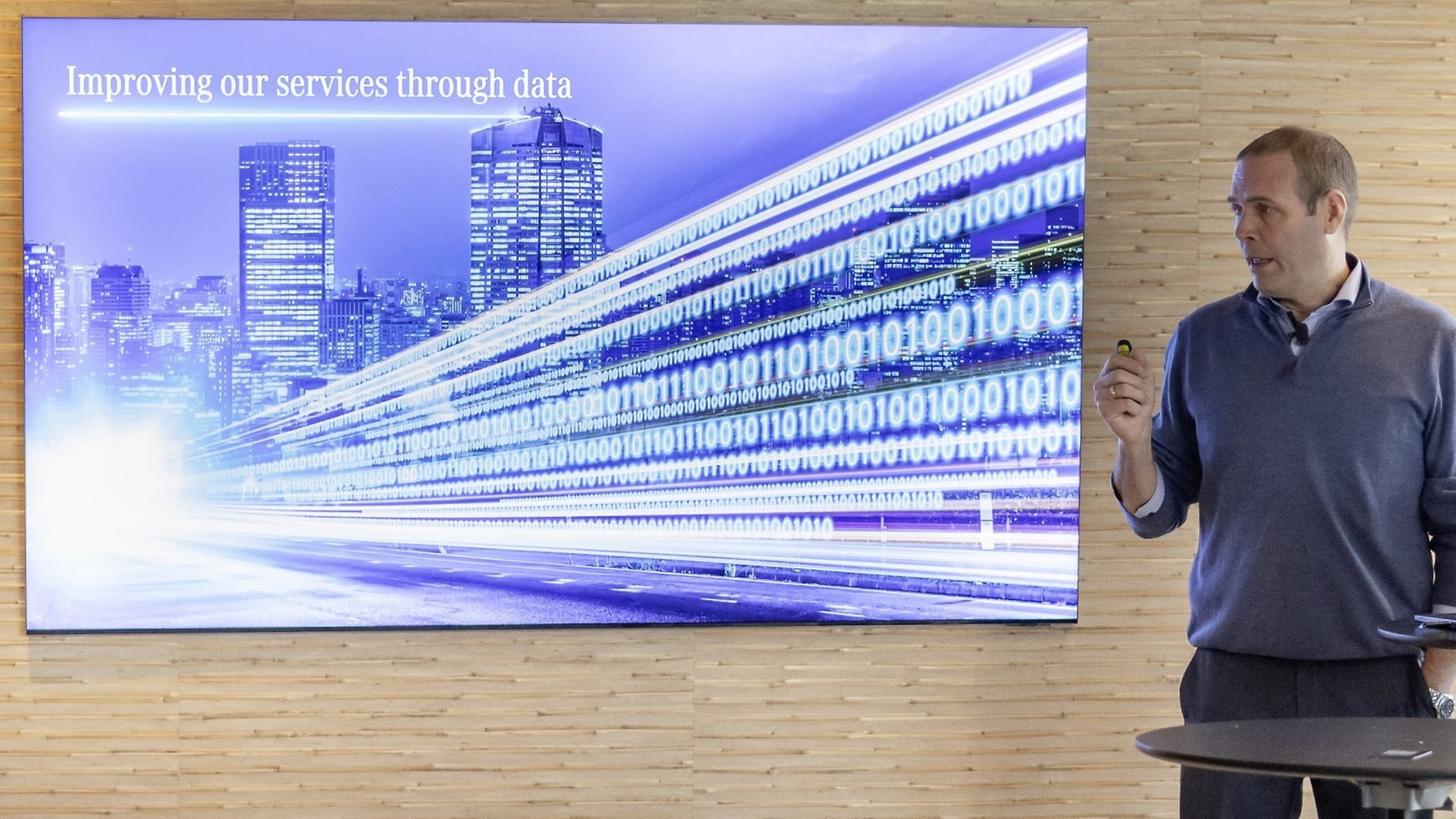March 29, 2022 – As part of Mercedes-Benz’s stated aim to “Lead in car software”, the company is accelerating development of its own operating system.
,xPosition=0,yPosition=0.5)
Mercedes-Benz Operating System (MB.OS)
Mercedes-Benz AG
Mercedesstraße 120
70372 Stuttgart
Germany
Phone: +49 7 11 17-0
E-Mail: dialog@mercedes-benz.com
Please send queries about content on this website to any contact. You can address your concerns to us in English and your respective national language.
Represented by the Board of Management:
Ola Källenius, Chairman; Jörg Burzer, Mathias Geisen, Olaf Schick, Michael Schiebe, Britta Seeger, Oliver Thöne, Harald Wilhelm
Chairman of the Supervisory Board: Martin Brudermüller
Court of Registry: Stuttgart; commercial register no. 762873
VAT ID: DE 32 12 81 763
All information about our products can be found on your country-specific Mercedes-Benz product page.
,xPosition=0,yPosition=0.5)
Mercedes-Benz Operating System (MB.OS)
March 29, 2022 – As part of Mercedes-Benz’s stated aim to “Lead in car software”, the company is accelerating development of its own operating system.
The Mercedes-Benz Operating System (MB.OS) will offer a high-performance, long-lasting and energy-efficient architecture that brings a raft of customer benefits, including the chance to regain time that would otherwise be spent in less productive or relaxing ways – yet another form of digital luxury. The system uses artificial intelligence to learn more and more about its users, adjusting to their habits and preferences. Through individualised offerings, it not only heightens the enjoyment of the user experience but also makes it easier and more intuitive.
The system reduces complexity through standardisation of electronic and electric hardware and software across all domains. For these purposes, Mercedes-Benz splits the car into four domains: infotainment; automated driving; body and comfort; driving and charging. The software consists of a user interface, applications, middleware and a basic operating system. In this context, the hardware is everything with a cable, electric/electronic hardware, chips and sensors.
Software is changing the world. At Mercedes-Benz, we are unleashing the potential of software to create true added value for our customers. That means focusing on those innovations that offer them true digital luxury through the gift of time. The success factor is the integration of software innovations with intelligently designed electronic hardware, underpinned by our new operating system, MB.OS. Developed increasingly in-house, this high-performance, long-lasting, energy-efficient architecture will facilitate a step change in the customer experience and development processes,
Magnus Östberg, Chief Software Officer, Mercedes-Benz AG.

Complexity reduction continues farther down with vertical hardware and software integration. By combining software and hardware in-house and defining exactly how the different levels in the domains, the cloud and the Internet Of Things (IOT) work together, Mercedes-Benz can achieve the best possible result for the customer. This includes faster feature deployment and data analysis to gain deeper insights into how the customer uses the UI, which will feed directly into the development process. In accordance with strict data protection and transparency, this is predicated upon prior approval from the customer. Furthermore, the customer experience will continuously develop through new and exciting functions, services and third-party apps delivered over the air (OTA).
Owning the user interface and reducing complexity will also benefit Mercedes-Benz as a company. By way of example, the current S-Class has more than 80 ECUs. Although this multi-level system of individual components works extremely well, it would nevertheless be more efficient to use far fewer units. The only way to achieve this effectively is to control more of this ourselves. Mercedes-Benz will roll out MB.OS across all product lines and re-use the platform through generations in order to leverage scale effects.